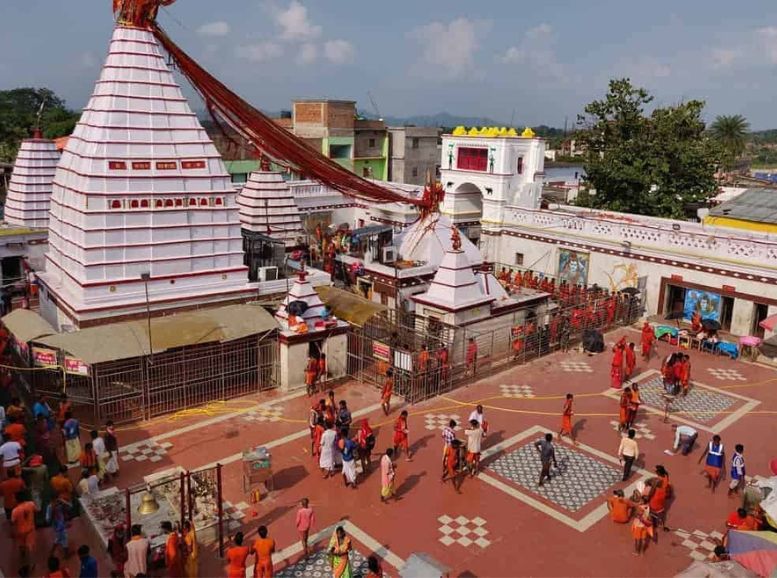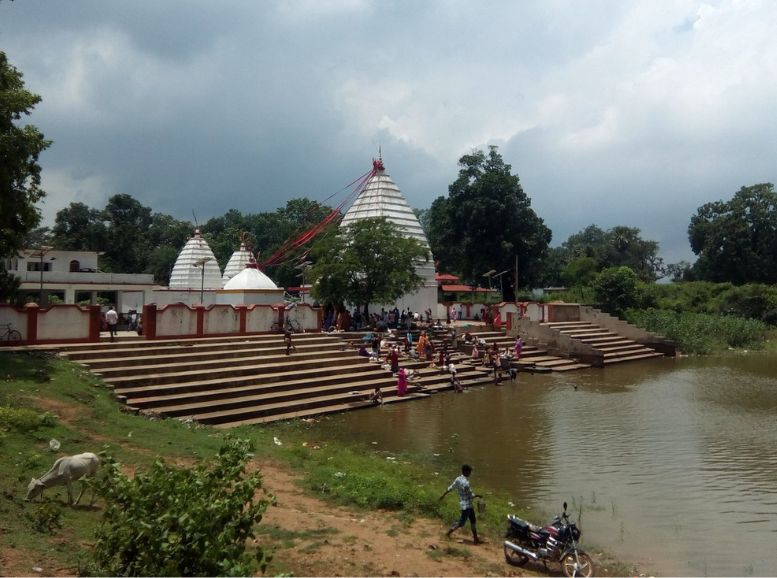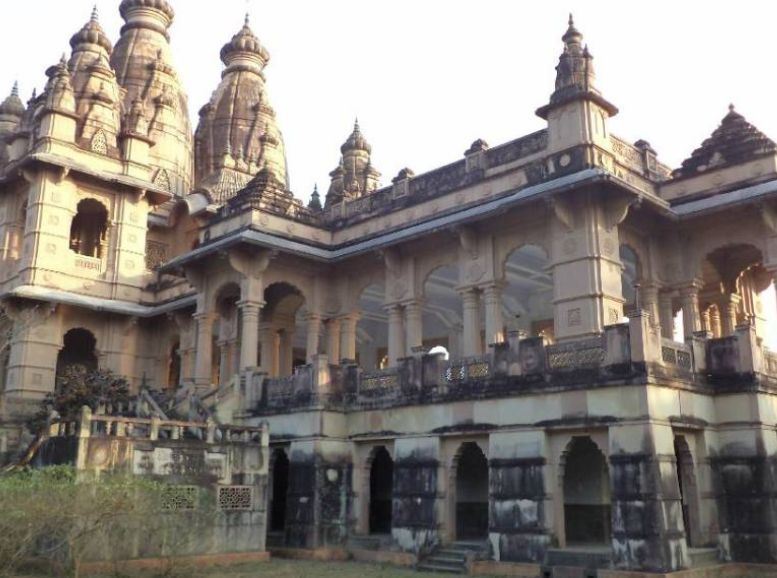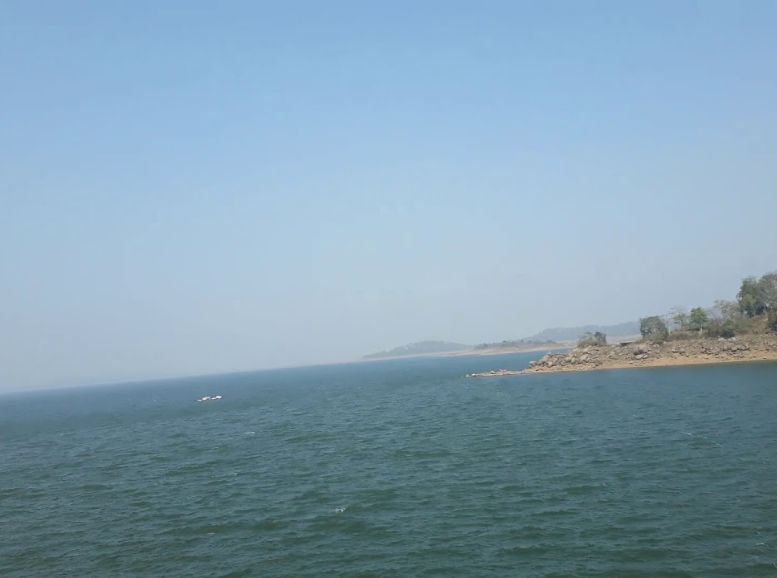Hidden away in the serenity of Maluti village, Jharkhand, lie the Maluti Temples – a treasure trove waiting to be unearthed. Often overshadowed by more prominent landmarks, these ancient structures hold a captivating charm that beckons history enthusiasts, spiritual seekers, and curious travelers alike.
Over 70 terracotta temples stand as silent storytellers, each adorned with intricate carvings and captivating designs. These exquisite artworks transport you back in time, offering a glimpse into the remarkable artistic and architectural talent of their creators. Built between the 17th and 19th centuries by the kings of the Baj Basanta dynasty, the temples showcase a fascinating blend of Hindu, Buddhist, and tribal influences, making them a unique example of harmonious architecture.
How to reach:
Air: Birsa Munda Airport in Ranchi (around 300 km away) offers the closest air connectivity. Flights from major Indian cities like Delhi, Mumbai, Kolkata, and Bengaluru arrive here regularly. Taxis and buses are available from Ranchi to Maluti. Alternatively, Netaji Subhas Chandra Bose International Airport in Kolkata (320 km) or Gaya Airport in Bihar (230 km) can be options.
Train: Rampurhat Railway Station in West Bengal (roughly 20 km away) is the nearest major railhead. It boasts good connections to Kolkata, Delhi, and Patna. Taxis or local buses can be used to reach Maluti from Rampurhat, offering a scenic journey.
Road: For a scenic road trip, take NH20 from Ranchi (300 km) to Dumka. Local roads will then connect you to Maluti. From Kolkata (320 km), drive on NH12 to Rampurhat, followed by local roads to Maluti. Dumka (55 km away) provides a shorter route via State Highway 7 to Rampurhat, with local roads leading onwards. Regular bus services operate from Ranchi, Dumka, and nearby cities to Rampurhat.
Getting Around: The Maluti Temples are conveniently situated and easily explored on foot. To delve deeper into their historical and cultural significance, consider hiring a local guide. Their insightful tours can significantly enhance your Maluti experience.
Best time to visit:
October to November: The lush greenery explodes after the monsoon rains, creating a vibrant landscape. This mild and pleasant post-monsoon season is perfect for sightseeing.
December to February: Winter brings cool and dry weather, with comfortable temperatures ranging from 10°C to 25°C. This period is considered the most comfortable time for outdoor activities and exploring the temples.
March: Early spring offers slightly warmer temperatures that remain comfortable for travel. Blooming flowers add another layer of beauty to the surroundings.
About the Maluti:
Veiled in the serenity of Jharkhand’s Maluti village lies a hidden gem – the Maluti Temples. Often eclipsed by more prominent landmarks, these over 70 terracotta temples, crafted between the 17th and 19th centuries, possess a captivating charm. Each structure stands as a silent guardian of the region’s rich cultural heritage, commissioned during the reign of the Baj Basanta dynasty.
Dedicated to a pantheon of deities like Shiva, Durga, Kali, and Vishnu, the Maluti Temples embody the harmonious blend of religious beliefs that thrived here. Intricate carvings and captivating designs adorn the terracotta facades, offering a glimpse into the artistic mastery of bygone eras. This remarkable collection, a lesser-known treasure trove, beckons history buffs, spiritual seekers, and curious explorers to embark on a journey through time.
Nearby Attractions:
Basukinath Temple, Maluti Temples:

Just 55 kilometers from Maluti, another gem awaits discovery – the Basukinath Temple. This ancient shrine dedicated to Lord Shiva attracts thousands of devotees year-round, especially during the vibrant Sawan festival (July-August) when the temple comes alive with festivities and rituals.
Intricate architecture adorns the temple complex, showcasing traditional designs and sculptures that whisper tales of Hindu deities and mythology. Devotees believe prayers offered here hold the power to cleanse sins and bring blessings. Step inside, and the serene atmosphere washes over you, punctuated by the rhythmic chanting of mantras and the calming fragrance of incense.
Baba Sumeshwar Nath Temple:

In the heart of Jharkhand, a revered Shiva temple stands tall, enveloped in an aura of serenity and spirituality. Baba Sumeshwar Nath Temple, located near Deoghar, is a sacred haven that attracts devotees and travelers seeking solace and divine blessings. The temple’s understated architecture belies its ancient significance, with intricate stone carvings and revered idols that whisper tales of a bygone era. Lush greenery surrounds the temple, creating a peaceful ambiance that invites contemplation and introspection. During auspicious Hindu festivals like Maha Shivaratri, the temple comes alive with vibrant rituals and ceremonies, filling the air with the sweet sounds of devotional music and temple bells. This sacred site is a testament to Jharkhand’s rich cultural heritage, beckoning all who seek spiritual enlightenment and a deeper connection with their inner selves.
Naulakha Mandir:

Deoghar, Jharkhand, boasts a gem of architecture – the Naulakha Mandir. Its design resonates with the Ramakrishna Temple in Belur, radiating an aura of tranquil grandeur. This temple is a sacred haven dedicated to the inseparable Radha and Krishna. Clad in luminous white marble, the temple’s intricate carvings whisper tales of faith. A majestic dome, a hallmark of Indian temple architecture, crowns the structure. The serene surroundings of Naulakha Mandir envelop visitors in a sense of peace, ideal for meditation and spiritual contemplation.
Within the sanctum, the serene idols of Radha and Krishna emanate a sense of tranquility, stirring devotion in the hearts of pilgrims. A delightful garden graces the temple grounds, adding a touch of vibrant serenity to the picturesque landscape.
Mayurakshi River:

Flowing serenely near Dumka, Jharkhand, the Mayurakshi River unfolds like a ribbon of tranquility. Its name, meaning “peacock’s eyes” in Sanskrit, hints at the captivating beauty that awaits. Lush vegetation carpets the banks, creating a peaceful haven for relaxation and idyllic picnics. Whether you yearn for a leisurely walk along the water’s edge or simply wish to soak in the natural splendor, the Mayurakshi River provides a sanctuary. Beyond its visual charm, the river serves as the lifeblood of the region, nourishing farms with its life-giving waters. During specific seasons, the riverside comes alive with vibrant local festivals and rituals, offering a window into the region’s rich cultural tapestry. The Mayurakshi River beckons with the promise of a refreshing escape, ideal for unwinding amidst breathtaking scenery or delving into the heart of the local traditions.
Local Experiences:
- Meet the Makers: Engage with local artisans and witness firsthand the creation of traditional terracotta work, pottery, and bamboo crafts. Learn the stories behind their craft and even try your hand at creating your own piece to take home.
- Village Rhythms: Immerse yourself in the daily routines of a village. Experience the art of farming, learn to cook traditional meals alongside local families, and explore the bustling atmosphere of local markets. Gain a deeper understanding of the local culture and way of life.
- Immerse in Celebrations: Plan your visit to coincide with vibrant festivals like Durga Puja, Kali Puja, and Makar Sankranti. Participate in the festivities, be captivated by traditional music and dance performances, and tantalize your taste buds with local delicacies.
- Unveiling the Past: Join a guided walk through the village and temple complex. Learn the fascinating history, architectural marvels, and cultural significance of the Maluti Temples.
- A Taste of Tradition: Indulge in the delightful flavors of local cuisine. Savor dishes like litti-chokha, dhuska, and pitha. Visit local eateries or take a cooking class to learn the secrets behind these delectable dishes. For an even more personal experience, join a local family for a traditional meal.
- Unwind in the Wild: Embark on nature walks or go bird watching in the nearby forests or along the serene Mayurakshi River. Keep your eyes peeled for local wildlife and the diverse bird species that call this region home.
Travel tips:
- Embrace the Golden Months: Aim for a visit between October and March. The pleasant weather makes sightseeing a delight, allowing you to fully appreciate the beauty of Maluti.
- Local Knowledge is Power: Consider hiring a local guide. They can unlock the rich history, architectural wonders, and cultural significance of the Maluti Temples, providing a deeper and more meaningful experience.
- Dress with Cultural Sensitivity: Opt for modest clothing as a sign of respect for the religious nature of the temples. Comfortable shoes are a must for navigating the temple complex and exploring nearby attractions.
- Pack for the Sun: Sunscreen, hats, and sunglasses will be your best friends against the Maluti sunshine.
- Stay Hydrated: Bring a refillable water bottle, especially if you plan on extensive exploration.
- Observe with Respect: Be mindful of local customs, particularly within religious sites. Remember to remove your shoes before entering temples and maintain a respectful demeanor.
Conclusion
Jharkhand’s Maluti Temples, a hidden gem documented on Xplro.com, unveil India’s rich heritage through intricate terracotta carvings and architectural grandeur. This adventure transcends sightseeing. Immerse yourself in the vibrant local culture, experience the rhythms of village life, and discover the serene beauty of rural Jharkhand. Whether you’re a history buff, an architecture enthusiast, or a spiritual seeker, Xplro.com can guide you on a unique and enriching journey. Engage with local artisans, savor delectable cuisine, participate in vibrant festivals, and explore the breathtaking natural beauty surrounding the temples. Maluti offers something for everyone. Start planning your unforgettable escape on Xplro.com.
FAQs
When is the optimal time to visit the Maluti Temples?
- The optimal time to visit the Maluti Temples is from October to March when the weather is pleasant and ideal for sightseeing.
How do I get to the Maluti Temples?
- The Maluti Temples are accessible by road. The nearest major town is Dumka, about 30 kilometers away. You can hire a taxi or take a local bus from Dumka to Maluti.
Are there accommodation options near the Maluti Temples?
- Yes, there are guesthouses and small hotels in Dumka and nearby towns. It’s recommended to book your stay in advance for a more comfortable visit.
Is there an entry fee for the Maluti Temples?
- No, there is no entry fee to visit the Maluti Temples. The site is open to all visitors without charge.
What should I wear when visiting the Maluti Temples?
- It’s best to wear modest clothing out of respect for the religious site. Comfortable shoes are also recommended for walking around the temple complex and surrounding areas.
Can I take photographs inside the temples?
- Photography is generally allowed, but it’s courteous to ask for permission before taking photos, especially inside the temples and of local people.
Are guided tours available at the Maluti Temples?
- Yes, hiring a local guide is highly recommended. Guides provide valuable insights into the history, architecture, and cultural significance of the Maluti Temples.
What other attractions are near the Maluti Temples?
- Nearby attractions include Basukinath Temple, Baba Sumeshwar Nath Temple, Naulakha Mandir, Trikut Hill, and Massanjore Dam. Each offers unique cultural, spiritual, or natural experiences.
What local cuisine should I try when visiting?
- Jharkhand’s traditional dishes like litti-chokha, dhuska, and pitha are a must-try. Visit local eateries or join a cooking class for an authentic culinary experience.
What language is commonly spoken in Maluti?
- The primary languages spoken in Maluti are Hindi and Bengali. Knowing basic phrases in these languages can be helpful.
Are the Maluti Temples accessible for wheelchair users?
- The terrain around the temples can be uneven, making accessibility challenging for wheelchair users. It’s best to check accessibility options in advance if you have mobility concerns.
What precautions should I take while visiting the Maluti Temples?
- Carry essentials like sunscreen, hats, sunglasses, and water bottles. Respect local customs, avoid littering, and ensure you have a working mobile phone with a local SIM card for communication and navigation.





